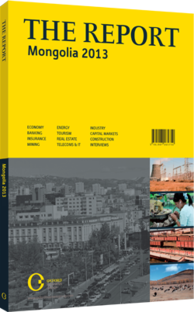A complex solution: Hopes are being pinned on Sainshand to diversify the economy
Progress at the Sainshand Industrial Complex should see Mongolia get more from its national assets. Most of the country’s resources are currently exported unprocessed, and the vast majority of the profits go elsewhere. At Sainshand, value will be added to raw materials so that Mongolia can realise gains currently being earned in other countries. "We are exporting raw materials," said B. Tsogtgerel, deputy minister at the Ministry of Industry and Agriculture. "We want to stop that." AMBITIOUS: The total value of the project will be $11bn, according to Tsogtgerel. Bechtel, the US engineering and construction firm that created the Sainshand master plan, and will oversee various aspects of the financing, put the total at about $9bn. While many of the major details are still in discussion, the basics have been outlined and agreed. A rail line will be extended from Sainshand, which sits on the existing north-south rail line, to Tavan Tolgoi. In phase 2 of the rail expansion programme, a spur line will be built to Oyu Tolgoi. Raw materials, including thermal coal, coking coal, iron ore, limestone and copper concentrate, will be transported to Sainshand, where they will be processed, in addition to metallurgical coke, iron ore pellets, reduced iron ore, copper anodes, sulphuric acid and cement, which will also be produced on site. The zone will also have an oil refinery and water treatment facilities. In approving the master plan in June 2012, the government said it expects 10,000 jobs to be created during construction and another 2400 by the complex itself. Sainshand is being called “GDP diversification”, an attempt to get away from the pure cyclicality of commodities and get into the business of making products. On the spectrum of value, Sainshand will only undertake the initial stages of processing and not get involved in high-end steel production.
FINANCING: The project is an integral part of the country’s National Development Strategy, a programme initiated in 2007 and designed to raise GDP per capita to $12,000 by 2021. Priorities include both the exploitation of natural resources and the development of a processing industry. The main issue with Sainshand is financing. The European Bank of Reconstruction and Development notes that while the total cost of the project is low compared with the value of Mongolia’s mineral resources — estimated at $1trn — it is high compared with GDP, about $9bn.
A number of possible structures have been suggested. Wholly government-owned entities financed with sovereign debt sold to others countries and to multilaterals are seen as appropriate for infrastructure, according to the master plan. It also suggests concessions to private companies to build industrial plants inside the complex, with money provided by commercial banks, sovereign wealth funds, multilaterals and the sponsors, as well as joint ventures between the state and private enterprise for parts of the complex.
Tsogtgerel believes that the government will need to raise at least some of the $11bn itself, with $300m via development banks or bonds and the rest from the private sector, depending on the final project dimensions. The state will build the main infrastructure and the rest will be handled by private industry. Most financing will be done using a public-private partnership (PPP) structure. Presentations by the National Development and Innovation Committee regarding the project envisioned the processing units being developed on an international project finance basis, with two-thirds equity provided locally and internationally and the rest from multilaterals, commercial banks and export credit agencies.
LESSONS LEARNED: The government learned a lot from Oyu Tolgoi, in which Mongolia failed to get proper independent advice at the time the agreement was being negotiated. The country is far better prepared for Sainshand, and agreements will only be reached after being properly vetted by international-level advisers working for the Mongolian government. “We are going to learn, step by step,” Tsogtgerel told OBG.
You have reached the limit of premium articles you can view for free.
Choose from the options below to purchase print or digital editions of our Reports. You can also purchase a website subscription giving you unlimited access to all of our Reports online for 12 months.
If you have already purchased this Report or have a website subscription, please login to continue.

